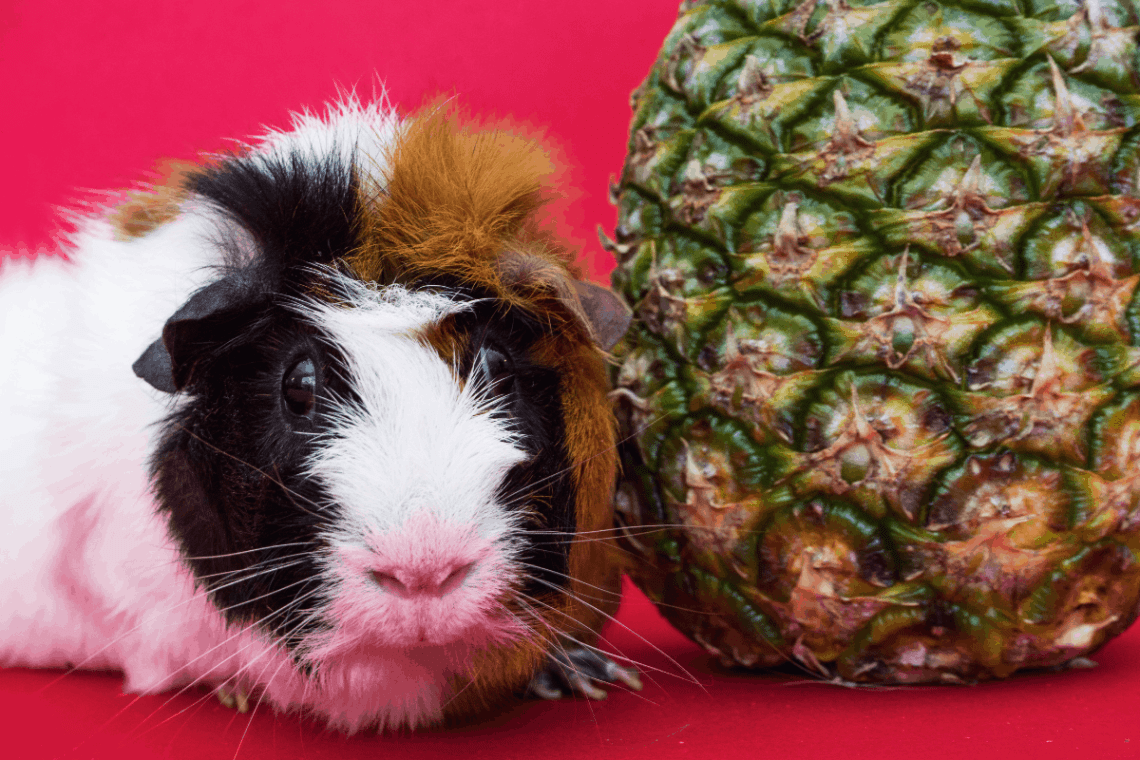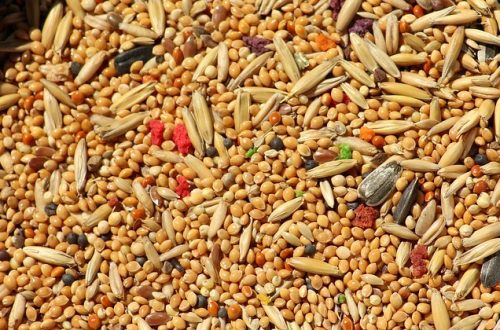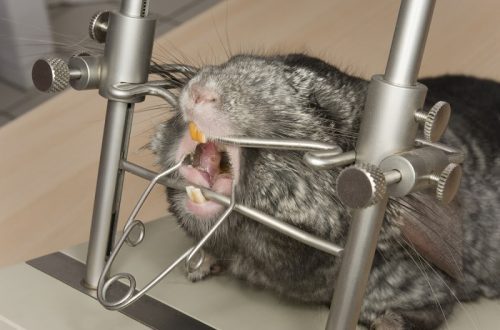
Juicy food for guinea pigs
Juicy foods include fruits, vegetables, root crops and gourds. All of them are well eaten by animals, have high dietary properties, are rich in easily digestible carbohydrates, but are relatively poor in protein, fat and minerals, especially such important ones as calcium and phosphorus.
Yellow and red varieties of carrots, containing a lot of carotene, are the most valuable succulent feed from root crops. They are usually fed to females during pregnancy and lactation, to breeding males during mating, as well as to young animals.
From other root crops, animals willingly eat sugar beets, rutabaga, turnips, and turnips.
Rutabaga (Brassica napus L. subsp. napus) is bred for its edible roots. The color of the roots is white or yellow, and the upper part of it, protruding from the soil, acquires a green, reddish-brown or purple tan. The flesh of the root crop is juicy, dense, yellow, less often white, sweetish, with a specific taste of mustard oil. The swede root contains 11-17% dry matter, including 5-10% sugars, represented mainly by glucose, up to 2% crude protein, 1,2% fiber, 0,2% fat, and 23-70 mg% ascorbic acid. (vitamin C), vitamins of groups B and P, salts of potassium, calcium, phosphorus, iron, magnesium, sulfur. Root crops are well stored in basements and cellars at low temperatures and remain fresh almost all year round. Root crops and leaves (tops) are willingly eaten by domestic animals, so rutabaga is grown both as a food and forage crop.
Carrots (Daucus sativus (Hoffm.) Roehl) is a biennial plant from the Orchidaceae family that is a valuable fodder crop, its root crops readily eat all types of livestock and poultry. Special varieties of fodder carrots have been bred, which are distinguished by large root sizes and, consequently, high yields. Not only root crops, but also carrot leaves are used for food. Carrot roots contain 10-19% dry matter, including up to 2,5% protein and up to 12% sugars. The sugars provide the pleasant taste of carrot roots. In addition, root crops contain pectin, vitamins C (up to 20 mg%), B1, B2, B6, E, K, P, PP, calcium, phosphorus, iron, cobalt, boron, chromium, copper, iodine and other trace elements. But the high concentration of carotene dye in the roots (up to 37 mg%) gives a special value to carrots. In humans and animals, carotene is converted into vitamin A, which is often deficient. Thus, eating carrots is beneficial not so much because of its nutritional properties, but because it provides the body with almost all the vitamins it needs.
Turnip (Brassica rapa L.) is grown for its edible root crop. The flesh of the root crop is juicy, yellow or white, with a peculiar pleasant taste. They contain from 8 to 17% dry matter, including 3,5-9%. Sugars, represented mainly by glucose, up to 2% crude protein, 1.4% fiber, 0,1% fat, as well as 19-73 mg% ascorbic acid (vitamin C), 0,08-0,12 mg% thiamine (vitamin B1 ), a little riboflavin (vitamin B2), carotene (provitamin A), nicotinic acid (vitamin PP), salts of potassium, calcium, phosphorus, iron, magnesium, sulfur. The mustard oil contained in it gives a specific aroma and pungent taste to the turnip root. In winter, root crops are stored in cellars and cellars. The best preservation is ensured in the dark at a temperature of 0 ° to 1 ° C, especially if the roots are sprinkled with dry sand or peat chips. Turnip stern courts are called turnips. Not only root crops are fed, but also turnip leaves.
Beetroot (Beta vulgaris L. subsp. esculenta Guerke), a biennial plant from the haze family, is one of the best succulent fodder. Root crops of different varieties differ in shape, size, color. Usually the root crop of table beet does not exceed half a kilogram weight with a diameter of 10-20 cm. The pulp of the root crops comes in a variety of shades of red and crimson. Leaves with a cordate-ovate plate and rather long petioles. The petiole and central vein are usually intensely burgundy in color, often the entire leaf blade is red-green.
Both roots and leaves and their petioles are eaten. Root crops contain 14-20% dry matter, including 8-12,5% sugars, represented mainly by sucrose, 1-2,4% crude protein, about 1,2% pectin, 0,7% fiber, and also up to 25 mg% of ascorbic acid (vitamin C), vitamins B1, B2, P and PP, malic, tartaric, lactic acids, salts of potassium, calcium, phosphorus, iron, magnesium. In beet petioles, the content of vitamin C is even higher than in root crops – up to 50 mg%.
Beets are also convenient because their root crops, compared to other vegetables, are distinguished by good lightness – they do not deteriorate for a long time during long-term storage, they are easily stored until spring, which allows them to be fed fresh almost all year round. Even though they become rough and tough at the same time, this is not a problem for rodents, they willingly eat any beets.
For fodder purposes, special varieties of beets have been bred. The color of fodder beet roots is very different – from almost white to intense yellow, orange, pink and reddish. Their nutritional value is determined by the content of 6-12% sugar, a certain amount of protein and vitamins.
Root and tuber crops, especially in winter, play an important role in animal feeding. Root crops (turnips, beets, etc.) should be given raw in sliced form; they are pre-cleaned from the ground and washed.
Vegetables and root crops are prepared for feeding as follows: they sort, discard rotten, flabby, discolored root crops, also remove soil, debris, etc. Then cut out the affected areas with a knife, wash and cut into small pieces.
Gourds – pumpkin, zucchini, fodder watermelon – contain a lot of water (90% or more), as a result of which their overall nutritional value is low, but they are eaten by animals quite willingly. Zucchini (Cucurbita pepo L var, giromontia Duch.) is a good fodder crop. It is grown for its fruits. Fruits reach marketable (technical) ripeness 40-60 days after germination. In a state of technical ripeness, the skin of zucchini is quite soft, the flesh is juicy, white, and the seeds have not yet been covered with a hard shell. The pulp of squash fruits contains from 4 to 12% dry matter, including 2-2,5% sugars, pectin, 12-40 mg% ascorbic acid (vitamin C). Later, when the fruits of squash reach biological ripeness, their nutritional value drops sharply, because the flesh loses its juiciness and becomes almost as tough as the outer bark, in which a layer of mechanical tissue – sclerenchyma – develops. Ripe fruits of zucchini are suitable only for livestock feed. Cucumber (Cucumis sativus L.) Biologically suitable cucumbers are 6-15-day-old ovaries. Their color in commercial condition (i.e. unripe) is green, with full biological ripeness they become yellow, brown or off-white. Cucumbers contain from 2 to 6% dry matter, including 1-2,5% sugars, 0,5-1% crude protein, 0,7% fiber, 0,1% fat, and up to 20 mg% carotene ( provitamin A), vitamins B1, B2, some trace elements (in particular iodine), calcium salts (up to 150 mg%), sodium, calcium, phosphorus, iron, etc. Special mention should be made of the cucurbitacin glycoside contained in cucumber. Usually we do not notice it, but in cases where this substance accumulates, the cucumber or its individual parts, most often the surface tissues, become bitter, inedible. 94-98% of the mass of the cucumber is water, therefore, the nutritional value of this vegetable is low. Cucumber promotes better absorption of other foods, in particular, improves the absorption of fats. The fruits of this plant contain enzymes that increase the activity of B vitamins.
Juicy foods include fruits, vegetables, root crops and gourds. All of them are well eaten by animals, have high dietary properties, are rich in easily digestible carbohydrates, but are relatively poor in protein, fat and minerals, especially such important ones as calcium and phosphorus.
Yellow and red varieties of carrots, containing a lot of carotene, are the most valuable succulent feed from root crops. They are usually fed to females during pregnancy and lactation, to breeding males during mating, as well as to young animals.
From other root crops, animals willingly eat sugar beets, rutabaga, turnips, and turnips.
Rutabaga (Brassica napus L. subsp. napus) is bred for its edible roots. The color of the roots is white or yellow, and the upper part of it, protruding from the soil, acquires a green, reddish-brown or purple tan. The flesh of the root crop is juicy, dense, yellow, less often white, sweetish, with a specific taste of mustard oil. The swede root contains 11-17% dry matter, including 5-10% sugars, represented mainly by glucose, up to 2% crude protein, 1,2% fiber, 0,2% fat, and 23-70 mg% ascorbic acid. (vitamin C), vitamins of groups B and P, salts of potassium, calcium, phosphorus, iron, magnesium, sulfur. Root crops are well stored in basements and cellars at low temperatures and remain fresh almost all year round. Root crops and leaves (tops) are willingly eaten by domestic animals, so rutabaga is grown both as a food and forage crop.
Carrots (Daucus sativus (Hoffm.) Roehl) is a biennial plant from the Orchidaceae family that is a valuable fodder crop, its root crops readily eat all types of livestock and poultry. Special varieties of fodder carrots have been bred, which are distinguished by large root sizes and, consequently, high yields. Not only root crops, but also carrot leaves are used for food. Carrot roots contain 10-19% dry matter, including up to 2,5% protein and up to 12% sugars. The sugars provide the pleasant taste of carrot roots. In addition, root crops contain pectin, vitamins C (up to 20 mg%), B1, B2, B6, E, K, P, PP, calcium, phosphorus, iron, cobalt, boron, chromium, copper, iodine and other trace elements. But the high concentration of carotene dye in the roots (up to 37 mg%) gives a special value to carrots. In humans and animals, carotene is converted into vitamin A, which is often deficient. Thus, eating carrots is beneficial not so much because of its nutritional properties, but because it provides the body with almost all the vitamins it needs.
Turnip (Brassica rapa L.) is grown for its edible root crop. The flesh of the root crop is juicy, yellow or white, with a peculiar pleasant taste. They contain from 8 to 17% dry matter, including 3,5-9%. Sugars, represented mainly by glucose, up to 2% crude protein, 1.4% fiber, 0,1% fat, as well as 19-73 mg% ascorbic acid (vitamin C), 0,08-0,12 mg% thiamine (vitamin B1 ), a little riboflavin (vitamin B2), carotene (provitamin A), nicotinic acid (vitamin PP), salts of potassium, calcium, phosphorus, iron, magnesium, sulfur. The mustard oil contained in it gives a specific aroma and pungent taste to the turnip root. In winter, root crops are stored in cellars and cellars. The best preservation is ensured in the dark at a temperature of 0 ° to 1 ° C, especially if the roots are sprinkled with dry sand or peat chips. Turnip stern courts are called turnips. Not only root crops are fed, but also turnip leaves.
Beetroot (Beta vulgaris L. subsp. esculenta Guerke), a biennial plant from the haze family, is one of the best succulent fodder. Root crops of different varieties differ in shape, size, color. Usually the root crop of table beet does not exceed half a kilogram weight with a diameter of 10-20 cm. The pulp of the root crops comes in a variety of shades of red and crimson. Leaves with a cordate-ovate plate and rather long petioles. The petiole and central vein are usually intensely burgundy in color, often the entire leaf blade is red-green.
Both roots and leaves and their petioles are eaten. Root crops contain 14-20% dry matter, including 8-12,5% sugars, represented mainly by sucrose, 1-2,4% crude protein, about 1,2% pectin, 0,7% fiber, and also up to 25 mg% of ascorbic acid (vitamin C), vitamins B1, B2, P and PP, malic, tartaric, lactic acids, salts of potassium, calcium, phosphorus, iron, magnesium. In beet petioles, the content of vitamin C is even higher than in root crops – up to 50 mg%.
Beets are also convenient because their root crops, compared to other vegetables, are distinguished by good lightness – they do not deteriorate for a long time during long-term storage, they are easily stored until spring, which allows them to be fed fresh almost all year round. Even though they become rough and tough at the same time, this is not a problem for rodents, they willingly eat any beets.
For fodder purposes, special varieties of beets have been bred. The color of fodder beet roots is very different – from almost white to intense yellow, orange, pink and reddish. Their nutritional value is determined by the content of 6-12% sugar, a certain amount of protein and vitamins.
Root and tuber crops, especially in winter, play an important role in animal feeding. Root crops (turnips, beets, etc.) should be given raw in sliced form; they are pre-cleaned from the ground and washed.
Vegetables and root crops are prepared for feeding as follows: they sort, discard rotten, flabby, discolored root crops, also remove soil, debris, etc. Then cut out the affected areas with a knife, wash and cut into small pieces.
Gourds – pumpkin, zucchini, fodder watermelon – contain a lot of water (90% or more), as a result of which their overall nutritional value is low, but they are eaten by animals quite willingly. Zucchini (Cucurbita pepo L var, giromontia Duch.) is a good fodder crop. It is grown for its fruits. Fruits reach marketable (technical) ripeness 40-60 days after germination. In a state of technical ripeness, the skin of zucchini is quite soft, the flesh is juicy, white, and the seeds have not yet been covered with a hard shell. The pulp of squash fruits contains from 4 to 12% dry matter, including 2-2,5% sugars, pectin, 12-40 mg% ascorbic acid (vitamin C). Later, when the fruits of squash reach biological ripeness, their nutritional value drops sharply, because the flesh loses its juiciness and becomes almost as tough as the outer bark, in which a layer of mechanical tissue – sclerenchyma – develops. Ripe fruits of zucchini are suitable only for livestock feed. Cucumber (Cucumis sativus L.) Biologically suitable cucumbers are 6-15-day-old ovaries. Their color in commercial condition (i.e. unripe) is green, with full biological ripeness they become yellow, brown or off-white. Cucumbers contain from 2 to 6% dry matter, including 1-2,5% sugars, 0,5-1% crude protein, 0,7% fiber, 0,1% fat, and up to 20 mg% carotene ( provitamin A), vitamins B1, B2, some trace elements (in particular iodine), calcium salts (up to 150 mg%), sodium, calcium, phosphorus, iron, etc. Special mention should be made of the cucurbitacin glycoside contained in cucumber. Usually we do not notice it, but in cases where this substance accumulates, the cucumber or its individual parts, most often the surface tissues, become bitter, inedible. 94-98% of the mass of the cucumber is water, therefore, the nutritional value of this vegetable is low. Cucumber promotes better absorption of other foods, in particular, improves the absorption of fats. The fruits of this plant contain enzymes that increase the activity of B vitamins.
Green food for guinea pigs
Guinea pigs are absolute vegetarians, so green food is the basis of their diet. For information on what herbs and plants can be used as green food for pigs, read the article.





